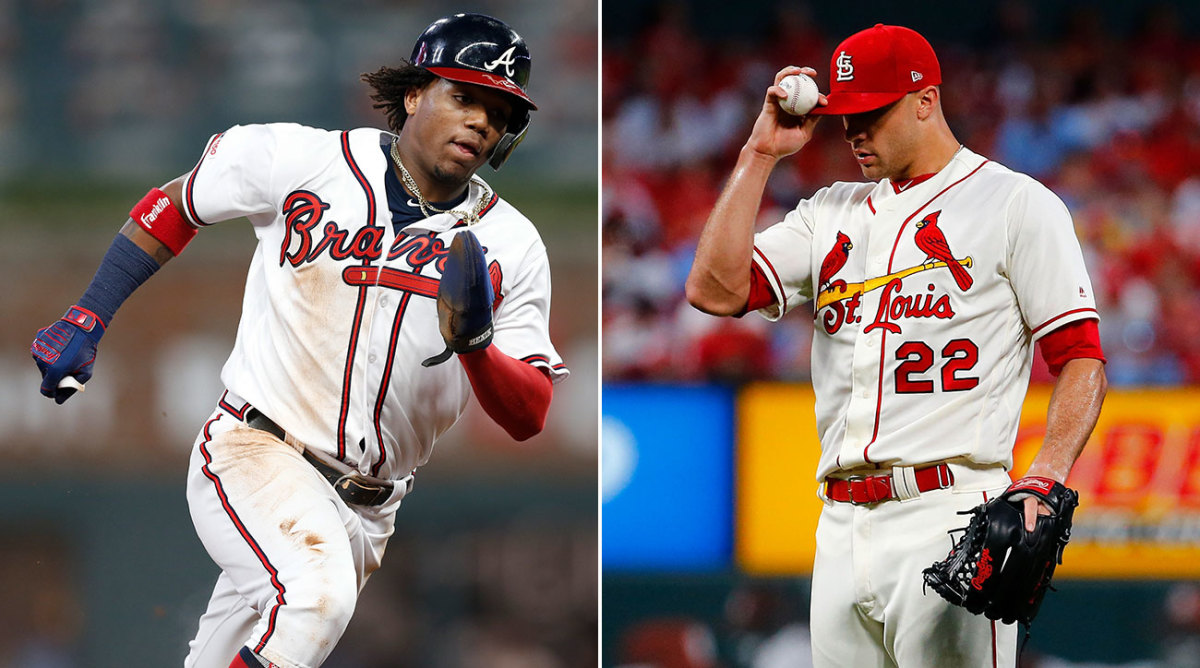Three Questions That Will Define Braves-Cardinals NLDS
To preview each postseason series, we’ll be giving you three questions to be answered. So here, for the NL East champion Atlanta Braves versus NL Central champ St. Louis Cardinals, are your three defining questions:
1. What effect will the Braves’ injuries have?
Atlanta comes into this series a little bruised. Ender Inciarte, who’s been out with a hamstring strain for more than a month, won’t be on the roster. Neither will Charlie Culberson (fractured cheekbone), and Johan Camargo (shin) likely won’t, either. Their collective absence means that the club will miss out on some depth and flexibility that would have been much appreciated—but the more pressing question is what it can expect from Freddie Freeman and Ronald Acuña, Jr., arguably the two most crucial members of the team’s offense.
The first baseman has bone spurs in his elbow that may potentially be addressed with surgery over the winter; while he played the final series of the season, he sat out the one prior, after a flare-up. Meanwhile, Acuña Jr. was shut down last week with a sore hip. Both are supposed to be ready for the NLDS—if they’re not at full strength, however, it could easily present an issue for the Braves.
2. How will the Cardinals’ rotation be shuffled around Jack Flaherty?
First, let’s take a moment to acknowledge just how wildly good Jack Flaherty has been in the second half: 0.91 ERA, with 11.2 K/9. Opponents have posted a .142 average versus him. So it’s hardly surprising that St. Louis turned to him for Game 162 to clinch the division on Sunday. (Obviously, he delivered.) But this means that Flaherty’s first start of the series is almost certain to be Friday’s Game 2, rather than a rush on three days’ rest for Thursday’s Game 1. The Cardinals, then, will likely choose between Dakota Hudson and Miles Mikolas to kick off the series—giving the other pitcher the ball for Game 3, with Adam Wainwright available for Game 4 and a return to Flaherty if there’s a Game 5. (It’s worth noting that all of the above are righties, so there are no particular match-up situations to prioritize.)
Flaherty enters as not just the hottest pitcher in this series, but the hottest in baseball; it makes sense that the club will use him here as much as possible. But just how it will structure the rest of the rotation remains to be seen.
3. How do the defenses match up?
These defenses are similar in that they tend to stick to a standard infield: The Cardinals ranked 25th in baseball for shift use (15.8% of PAs) and the Braves ranked 26th (14.9%). But, beyond that, the differences pile up. St. Louis’ defense is statistically among the best in the NL. It’s in the top three for both Defensive Runs Saved and Ultimate Zone Rating, as well as defensive efficiency and fielding percentage. It had fewer errors than any club in baseball and executed more double plays than all but one other. The Cardinals are one of only a handful of teams who held opponents to a lower actual batting average than expected batting average. There was, basically, a lot that went well here.
For the Braves, meanwhile ... not so much. It’s not a bad defense, but it’s nowhere near the Cardinals’, ranking below average in many of the previously mentioned stats. Is it a serious liability? No. But could it be a difference-maker in a series where every little piece counts? Absolutely.



































